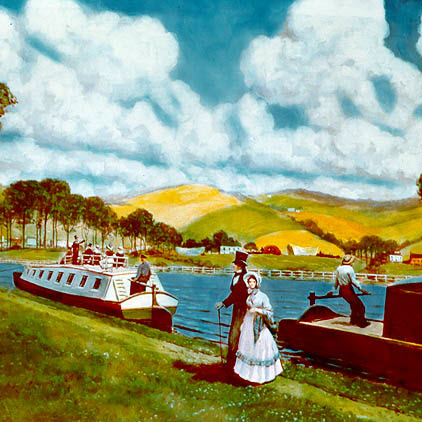Decennial Census Historical Facts
Decennial Census Historical Facts
Censuses are not conducted in a vacuum. They occur amidst internal and external crisis, shifts in cultural interests, and events that become "defining moments" for each decade. Census data reflect the growth of the population as well as the changing values and interests of the American people.
Decennial Historical Facts provides a portrait of the United States both statistically and culturally in the following four areas:
- Pop Culture – key milestones from the decade following the census.
- Population
- Census Details
- 10 Largest Urban Places
1810
ICONS: Chief Tecumseh, War of 1812, Erie Canal



Population
| 7,239,881 | U.S. Resident Population |
| 4.3 |
Population per square mile of land area |
| 36.4 |
Percent increase of population from 1800 to 1810 |
| 17 |
Number of States |
10 Largest Urban Places
| Rank |
Place |
Population |
|---|---|---|
| 1 |
New York City, NY | 96,373 |
| 2 |
Philadelphia, PA | 53,722 |
| 3 |
Baltimore, MD | 46,555 |
| 4 |
Boston town, MA | 33,787 |
| 5 |
Charleston, SC | 24,711 |
| 6 |
Northern Liberties township, PA | 19,874 |
| 7 |
New Orleans, LA | 17,242 |
| 8 |
Southwark district, PA | 13,707 |
| 9 |
Salem town, MA | 12,613 |
| 10 |
Albany, NY | 10,762 |
The 1810 Census
| Cost | $178,000 |
| Cost per Capita (cents) | 2.4 |
| Total Pages in Published Reports | 469 |
| Number of Enumerators | 1,100 (est.) |
| Census Bureau Director | Robert Smith |
| Number of Questions on the Questionnaire | 7 |
| Number of Questions on the Long Form | N/A |
Pop Culture
- On June 23, 1810, John Jacob Astor founds the Pacific Fur Company. The success of this trading company would make him the United States' first multi-millionaire and even when adjusted for inflation, one of the richest men in American history.
- Steam-powered ferry service between New York City and Hoboken, NJ, begins on October 11, 1811.
- On November 6, 1811, American troops led by William Henry Harrison defeat the American Indian chief Tecumseh at the Battle of Tippecanoe.
- A magnitude 8.3 earthquake (the strongest ever recorded in the continental United States) strikes near New Madrid, MO, temporarily reversing the course of the Mississippi River on February 2, 1812.
- British soldiers burn the White House and other government buildings on August 24, 1814.
- Francis Scott Key writes "The Star Spangled Banner" while witnessing the September 13-14, 1814, bombardment of Fort McHenry in Baltimore Harbor.
- On September 23, 1815, the "Great September Gail of 1815" begins in New England, marking the first hurricane (a category 3) to strike the region since 1635.
- Construction begins on the Erie Canal in Rome, NY, on July 4, 1817.
- The thirteen stars and stripes configuration of the U.S. flag is officially adopted by Congress on April 4, 1818.
- Thomas Jefferson founds the University of Virginia on January 25, 1819.
- The first installment of Washington Irving's Rip Van Winkle appears in the May 1819 edition of The Sketch Book.
- The American steamship "Savannah" crosses the Atlantic Ocean in 29 days, arriving in Liverpool, England, on June 20, 1819.
Page Last Revised - October 8, 2021




